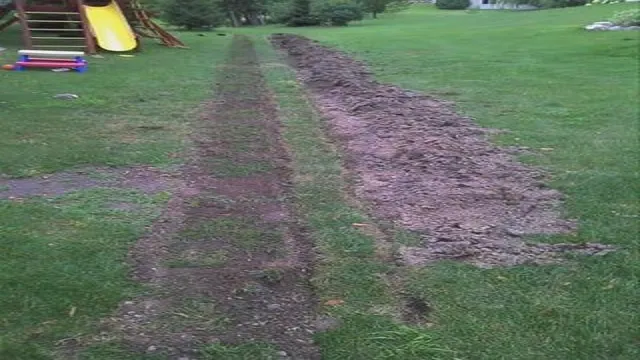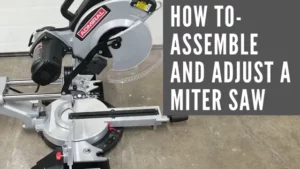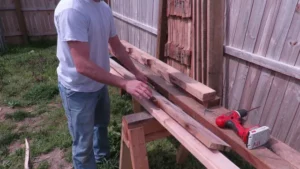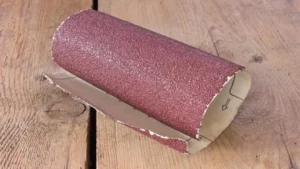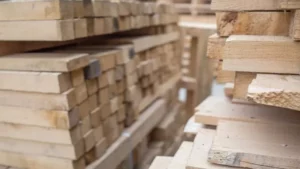Do you suspect that you might have drain tiles installed in your yard? Perhaps you’ve had issues with standing water or poor drainage in the past and are wondering if your property has a drain tile system installed. Drain tiles are typically buried close to the ground and are not always easy to locate without a bit of detective work. In this blog, we’ll explore some tips on how to find drain tile in your yard and what to do if you need to repair or replace your drain tile system.
So, grab that shovel and let’s get digging!
Introduction
Are you experiencing waterlogged lawns, soggy basements, or foundation cracks? These are signs that your drainage system is not functioning properly, and you may need to find the drain tile in your yard. Drainage tiles are designed to collect excess water from your lawn and redirect it away from your home’s foundation. The traditional method of finding a drain tile is by digging at the spot where the water is pooling.
However, this method can be destructive and time-consuming. A simpler approach is to utilize the latest technology, such as ground penetrating radar (GPR), which uses radio waves to locate underground objects, including drain tiles. You can rent GPR units or hire a professional contractor to do the job.
Another method is to follow the natural flow of water or look for any visible signs of the drain tile such as depressions or metal grates. Before starting any work, it’s always best to consult a professional to verify your assumptions and avoid any costly mistakes. With these methods, you can find the drain tile in your yard and protect your home from water damage.
Defining Drain Tile and Its Purpose
Drain tile, also known as a French drain, is a perforated pipe installed beneath the surface of the ground to redirect water away from a structure or landscape. The pipe is typically surrounded by gravel or stone to allow water to flow freely into the pipe and away from the area. The purpose of drain tile is to prevent water from damaging the foundation of a building or causing erosion in a landscape.
In areas with heavy rainfall or high water tables, drain tile is a crucial component in maintaining the structural integrity of a building or preserving the beauty of a landscape. By redirecting water away from the property, drain tile can help prevent water damage, mold growth, and other costly repairs. Whether you are building a new home or landscaping your yard, incorporating drain tile can help protect your property for years to come.
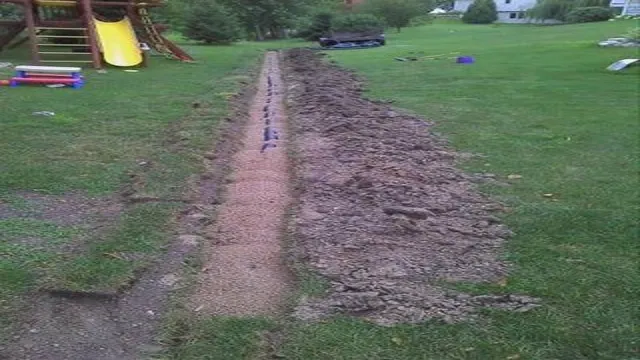
Why Do You Need to Find Your Drain Tile?
Drain tile is a vital component of any home’s drainage system. It’s important to locate your drain tile to ensure proper functioning of the system, which collects and redirects excess water away from your home’s foundation. Without proper drainage, water can cause serious structural damage to your home over time, leading to expensive repairs.
By finding your drain tile, you can check for signs of wear and tear, ensure it’s not blocked, and maintain a healthy foundation for your home. So, the next time it rains, take some time to locate your drain tile and ensure it’s in good working condition to protect the foundation of your home.
Step-by-Step Guide
If you’re experiencing frequent flooding in your yard, it could be due to clogged or broken drain tile. Finding drain tile in your yard can be a daunting task, but it’s a necessary one to ensure proper drainage and prevent further damage. The first step is to locate the main drain in your basement or crawl space, which is usually near the foundation wall.
From there, you can determine the direction of the drain tile by following the slope of the yard. Look for any wet spots or areas with overgrown vegetation, as this could indicate a clog or break in the drain tile. You can also use a metal detector to locate any metal pipes in the ground.
Once you’ve located the drain tile, mark the area with small flags or spray paint to make it easier to identify in the future. Remember, it’s essential to maintain your drain tile to prevent costly repairs and protect your property from water damage.
Step 1: Look for Exterior Drainage System Components
When it comes to ensuring proper exterior drainage, it’s important to start by identifying the key components of your system. The first step in this process is to do a visual inspection of your property, looking for things like gutters, downspouts, and drainage tiles. Gutters are an essential part of any exterior drainage system, as they are designed to collect rainwater from your roof and direct it away from your home’s foundation.
Downspouts then carry this water down and away from your home, preventing it from pooling near the foundation and causing damage. Drainage tiles are also important, as they help to direct excess water away from your property and into nearby drainage systems. By identifying these key components and making sure they are in good working order, you can help to protect your home from water damage and maintain its structural integrity for years to come.
So, don’t overlook these essential components when inspecting your drainage system!
Step 2: Trace the Downspout
Now that you’ve marked the location of your downspout, it’s time to trace it. This step is crucial as it helps you identify any obstacles or obstructions that could complicate the installation process. Start by placing a metal detector over the area where you’ve marked your downspout.
This tool will help you detect any buried objects, like pipes or wires, that could potentially interfere with the installation. Make sure you move the detector in a straight line along the path of the downspout. If the metal detector beeps, mark the area and dig carefully around it to avoid any damage.
Once you’ve traced the entire path of the downspout, you’ll have a better understanding of what materials and tools you’ll need. Remember, safety is always key when working with electrical objects, so make sure to turn off any power sources before you start digging. By following these steps, you’ll be well on your way to successfully installing your new downspout.
Step 3: Look for Basement or Crawlspace Access
When inspecting a property for potential water damage, it’s crucial to look for basement or crawlspace access. These areas are often overlooked but can reveal important clues about the state of the property’s foundation. Typically, there are two types of basements: finished and unfinished.
A finished basement is a living space, while an unfinished basement is an area used for storage or mechanical purposes. In either case, it’s important to check for signs of water damage, including mold, rust, or discoloration. With crawlspaces, you’ll want to check for moisture, mold, and proper ventilation.
If there are any signs of water or moisture in the basement or crawlspace, it could indicate a bigger problem with the property’s foundation or plumbing system. Don’t overlook these areas during the inspection process; it could save you a lot of money and headache down the road.
Step 4: Use a Drain Camera
Using a drain camera is a crucial aspect of drain cleaning and maintenance. Once the clog has been cleared, it is essential to get an inspection done to ensure that there are no underlying problems. A drain camera is a device that is inserted into the pipe to take a close-up look at the inner workings.
This enables the plumber to see if there are any cracks, leaks, or damage to the pipe. The camera can also identify any areas that may be prone to clogs in the future. If there are any issues detected, the plumber can make recommendations for repairs or replacement.
It is important to use a drain camera to avoid future problems and ensure the longevity of your drain system. So, don’t forget to schedule a drain camera inspection after clearing your clog.
Additional Tips
Finding drain tile in your yard can be a tricky task, but there are a few things you can do to make the process easier. The first thing you should do is check any available plans or blueprints of your property. This can give you a good idea of where the drain tile is located.
If you don’t have any plans, you can try using a metal detector to locate it. Look for areas where the grass is greener or more lush than the surrounding areas, as this may signify the presence of drain tile. Another option is to look for areas where water tends to collect or pool after a heavy rain.
This can be a sign that the drain tile is clogged or damaged and needs to be repaired. In some cases, you may need to hire a professional to locate the drain tile for you, especially if it is buried deep beneath the ground. By following these tips, you can find drain tile in your yard and ensure that it is functioning properly to prevent water damage and other issues.
Safety Precautions
When it comes to taking safety precautions, it’s always better to be proactive rather than reactive. Whether you’re at home or out and about, there are several additional tips you can follow to ensure your safety. Firstly, it’s important to trust your instincts.
If a situation feels off, it probably is, and it’s better to err on the side of caution. Additionally, be aware of your surroundings and keep an eye out for any potential hazards or dangerous individuals. If you’re heading out, make sure to let someone know where you’re going and when you plan on coming back.
This way, if something does happen, someone will know to come looking for you. It’s also a good idea to carry some form of self-defense with you, such as pepper spray or a personal alarm. However, it’s important to remember to use these tools only as a last resort, and to always prioritize your safety above all else.
Overall, by keeping these additional tips in mind, you can take the necessary precautions to prioritize your safety in any situation. Remember to stay vigilant and proactive, and you’ll be able to stay safe and secure in any environment.
When to Hire a Professional
When it comes to deciding when to hire a professional, there are a few additional tips to keep in mind. Firstly, be sure to do your research before making any decisions. Look into the credentials and experience of any potential professionals you may hire.
Additionally, consider the cost and time it may take to do the job yourself versus hiring a professional. Sometimes it may be worth it to pay more for an expert to ensure the job is done right and in a timely manner. It’s also important to communicate clearly with the professional you choose to hire.
Be specific about what you need and ask any questions you may have upfront to avoid any misunderstandings. Lastly, don’t be afraid to ask for references or read reviews of the professional before committing to their services. Keeping these tips in mind can help you make the best decision when it comes to hiring a professional for your needs.
Conclusion
In summary, finding drain tile in your yard requires a combination of detective work and technology. You may need to break out the shovel and dig a little, but don’t forget to also utilize ground-penetrating radar and other advanced tools for a more efficient search. Remember, the key to success is persistence and a little bit of luck.
With these tips in mind, you’ll be well on your way to uncovering your yard’s hidden drain tile and keeping your property dry as a bone.”
FAQs
What is a drain tile and why would I need to find it in my yard?
A drain tile is a pipe typically installed underground to help manage water flow and prevent water damage to homes and other structures. If you suspect water issues in your yard, finding the drain tile may help determine the cause and develop solutions.
How can I locate my drain tile?
There are a few methods to locate drain tiles including using a metal detector, following the slope of your yard, and probing the soil. You may also consider hiring a professional to use specialized equipment to locate the drain tile.
Can I dig up my yard to find the drain tile myself?
It is not recommended that you dig up your yard to find the drain tile without professional assistance. This can cause damage to your yard and potentially your home. Consider hiring a professional to locate the drain tile.
If I find my drain tile, can I repair or replace it myself?
Repairing or replacing a drain tile should always be left to professionals. The process involves digging up the surrounding area and ensuring proper installation to prevent future water damage.
What are the signs that I may need to locate my drain tile?
Signs that you may need to locate your drain tile include standing water in your yard, soggy soil, mold or mildew growth, or moisture issues in your home’s basement or foundation.
How much does it cost to locate a drain tile?
The cost to locate a drain tile can vary depending on the location and size of the drain tile, as well as the method used to locate it. It is recommended to obtain quotes from multiple professionals to determine the best cost option for your specific situation.
Will finding my drain tile solve all of my water issues?
Finding your drain tile is the first step in identifying potential water issues in your yard, but it may not solve all of the issues. Additional solutions may need to be implemented such as installing a sump pump, grading your yard, or adding drainage solutions.
